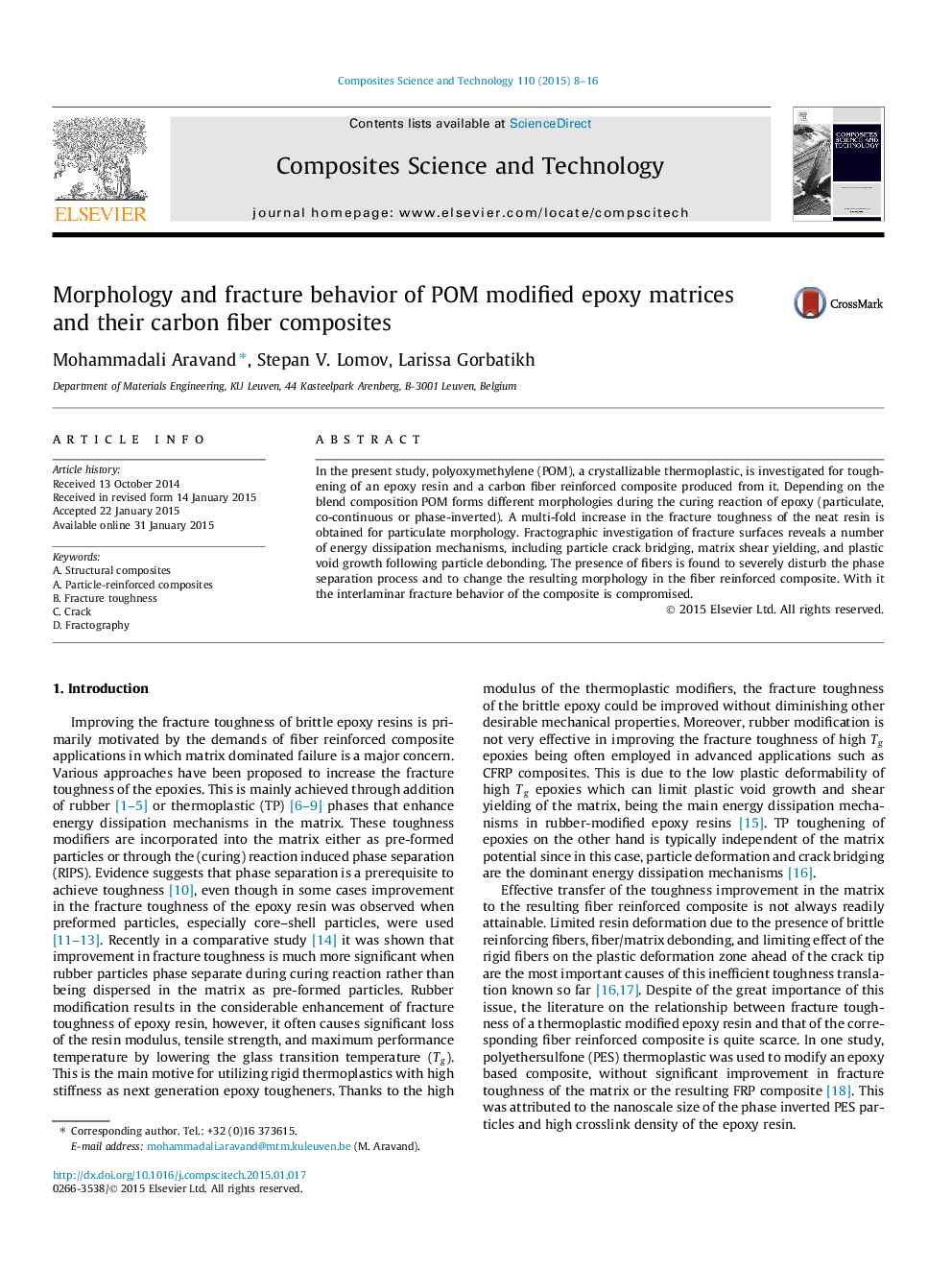| Article ID | Journal | Published Year | Pages | File Type |
|---|---|---|---|---|
| 7215502 | Composites Science and Technology | 2015 | 9 Pages |
Abstract
In the present study, polyoxymethylene (POM), a crystallizable thermoplastic, is investigated for toughening of an epoxy resin and a carbon fiber reinforced composite produced from it. Depending on the blend composition POM forms different morphologies during the curing reaction of epoxy (particulate, co-continuous or phase-inverted). A multi-fold increase in the fracture toughness of the neat resin is obtained for particulate morphology. Fractographic investigation of fracture surfaces reveals a number of energy dissipation mechanisms, including particle crack bridging, matrix shear yielding, and plastic void growth following particle debonding. The presence of fibers is found to severely disturb the phase separation process and to change the resulting morphology in the fiber reinforced composite. With it the interlaminar fracture behavior of the composite is compromised.
Keywords
Related Topics
Physical Sciences and Engineering
Engineering
Engineering (General)
Authors
Mohammadali Aravand, Stepan V. Lomov, Larissa Gorbatikh,
